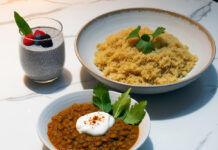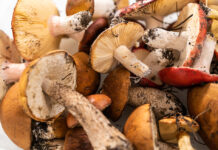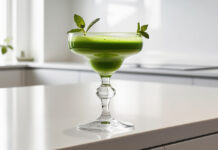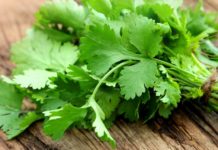
HOW CHANGES IN LIFESTYLE, DIET AND TREATMENT CAN HELP TO IMPROVE YOUR JOINT HEALTH—AND YOUR OVERALL QUALITY OF LIFE
BY DR. MARIA SHAPOVAL, ND
According to The Arthritis Society, 10 per cent of Canadians experience joint pain on a daily basis. This results in significant changes to lifestyle, predisposing sufferers to further health problems. Those with chronic joint pain may find themselves avoiding painful activities like baths, taking the stairs, or simply walking. Additionally, changes in hobbies may subsequently affect their social life, which results in an increase of cardiovascular disease, depression and reduced quality of life.
The most common form of arthritis is osteoarthritis (OA), a slow and progressive degeneration of the joint cartilage. According to a global study comparing the prevalence and incidence of OA to 291 other conditions, OA rated as the 11th cause of chronic disability. It is expected to rise with an increase in sedentary lifestyle, aging population and obesity. Characteristic symptoms of OA include joint pain, restricted range of motion, stiffness and crepitus (crackling and popping sounds). These symptoms often fluctuate in severity with changes in weather (humidity and temperature), physical activity, mood, diet and hydration. Yes–hydration! Increased water intake can have a significant effect on joint pain as well as range of motion, when water is consumed on a regular basis. An easy test to see if you are dehydrated is to drink 500mL of water more than you typically drink for two weeks and see if symptoms improve (unless of course you are already consuming 2L of water or more daily).
PREVENTION
The modi able risk factors for OA include being overweight, a sedentary lifestyle and previous joint injury. These factors are interdependent, as a physical, active lifestyle can prevent both excess weight gain as well as joint injury. Joint injury can result from exercise as well; incorrect techniques can put too much force and pressure on the knee joint, such as running on concrete, bending past 90 degrees when performing lunges or squats, and landing on straight knees after jumping. At the same time, lack of exercise weakens the protective muscle around the knee and can predispose the body to injury.
Interestingly, the PRevention of knee Osteoarthritis in Overweight Females (PROOF) study, published in the Annals of the Rheumatic Disease journal in 2014, compared the e ect of pain killers and exercise on postmenopausal women with OA. The study showed that exercise had the same level of pain relief as pain killers, highlighting the importance of exercise not only in disease prevention but also its management.
HOW CAN NATUROPATHIC TREATMENTS HELP?
Diet: Finding the right diet may take some time and explora- tion. While the general advice—consuming less processed foods and more fruits and vegetables— is completely relevant, there are more speci c recommendations that are worth exploring.
However, their effect is highly individual. Foods from the nightshade family, such as, tomatoes, bell peppers, potatoes and eggplant, can cause aggravation of symptoms in some, while dairy and gluten are known triggers for others.
Herbs And Nutraceuticals: While OA is considered a degenerative form of arthritis, there is still a significant degree of inflammation that can be reduced with anti-inflammatory herbs and nutraceuticals. Turmeric, ginger, and green tea are only a few of the herbs that o er comparable results to standard nonsteroidal anti-inflammatory drugs (NSAIDs) when taken at appropriate dosages, without the associated risks of stomach irritation. Topical creams, like Arnica, for example, can provide temporary symptomatic relief, but are best used strategically to be reserved to help with after exercise recovery and/or are-up pain.
Physical Therapies: Acupuncture, combined with electrical stimulation, is very e ective at pain management, with both acute and long-term e ects. The analgesic e ect of acupunc- ture has been well researched, while recent studies demonstrate modest anti-in ammatory e ects.
Sleep: Sleep is an important factor in joint health, as this is the optimal time for joint repair and regeneration. Melatonin, a hormone produced when sleeping in a dark environment, has been shown to enhance cartilage synthesis as well as protect it from further damage.
Hydrotherapy: Medicinal peat bath, a form of balneotherapy, involves immersion into a heated bath lled with peat and water for 20-40 minutes, followed by a 20-minute dry relaxation phase. Peat has anti-in ammatory properties, and helps reduce pain and improve joint function.
While “I’ve tried it all” is a common sentiment among patients, there is a wide range of treatment options that can be used to not only manage pain, but actually improve function. Of course, these treatments work best when combined with diet and exer- cise modi cation, but also when other health concerns are being addressed in a comprehensive fashion.
Depression, for example, is a large barrier to both lifestyle modi cation and pain management, as alterations in mood are strongly associated with reduced pain threshold and an increase in inflammation. Proactively addressing these concerns when they first develop offers the most flexibility and a better prognosis. VM










